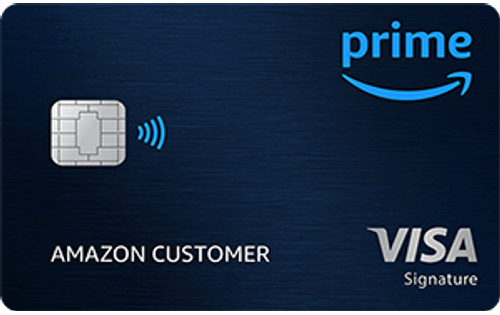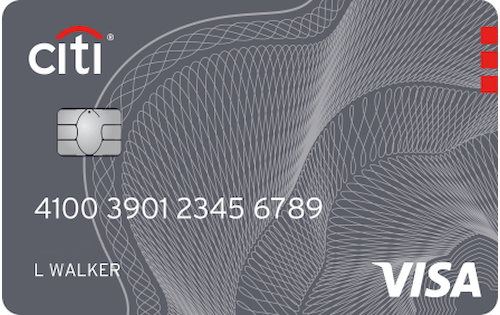- Our picks
- How we picked the best store credit cards
- Other key things to know about store credit cards
- Beginner's guide
- Sources
- About the author
- User questions & answers
- Expert opinions
Our Picks for the Best Store Credit Cards in 2024
The best store credit card offers all have $0 annual fees, and most give cardholders the opportunity to earn a lot of rewards. There are plenty of great offers, too. In general, store credit cards are known for big discounts on the day of account opening, ongoing benefits for loyal customers, low fees and fairly lenient approval requirements. WalletHub’s editors compared the offers affiliated with the largest and most popular retailers based on those factors to find the best store credit cards on the market right now.
For your convenience, we’ve summarized our picks for the best store credit cards in the most popular categories below:
Best Store Credit Cards Comparison
| Credit Card | Best For | Annual Fee |
| Prime Visa | Overall | $0 |
| Capital One Walmart Rewards® Mastercard® (see Rates & Fees) | Walmart Purchases | $0 |
| Amazon Store Card | Store Credit Card for Online Shopping | $0 |
| Costco Anywhere Visa® Card by Citi | Co-Branded | $0 |
| Kohl's Credit Card* | Best Rewards | $0 |
| Amazon Secured Credit Card | Store Credit Card for Bad Credit | $0 |
Finally, we do not recommend using a store credit card to finance big-ticket purchases. The best 0% credit cards offer much better deals, and store-card financing often includes a dangerous feature known as deferred interest. It basically means that if you pay your bill late or don’t pay off your full balance by the end of the promotional financing period, interest charges will be retroactively applied to your entire original purchase amount.
How We Picked the Best Store Credit Cards
To identify the best store credit cards on the market, WalletHub’s editors regularly compare more than 200 store credit card offers, including both store-only cards and cards co-branded between a retailer and a major card network. We compare the cards based on their rewards, fees, interest rates, approval requirements, and other WalletHub Rating components. Store accessibility also plays a big role. Retailers with thousands of locations and representation in every state receive preference over smaller, more localized retailers, all else being equal.
Given that a wide range of different types of stores exist, we separate our picks for the best store credit cards into a handful of popular categories. They range from grocery stores and department stores to gas stations and online retailers.
How Two-Year Cost Is Calculated
Two-year cost is used to approximate the monetary value of cards for better comparison and is calculated by combining annual and monthly membership fees over two years, adding any one-time fees or other fees (like balance transfer fees), adding any interest costs, and subtracting rewards. Negative amounts indicate savings. When fees or other terms are presented as a range, we use the midpoint for scoring purposes. Rewards bonuses and credits have been taken into account for two-year cost calculations. However, bonuses applicable to only a very small portion of cardholders are not considered. For example, credits and bonuses awarded for spending or redeeming rewards through a company portal with non-co-branded cards have not been taken into account. Similarly, bonuses and credits related to spending with specific merchants using a non-co-branded card have not been taken into account (for example, if Card A offers credits with DoorDash, this feature would not be factored into calculations because it is hard to assess how many cardholders would use the benefit or exactly how much value they'd get from it).
Cardholder Spending Profiles
Given that different users have different goals and are likely to use their credit cards differently, we identified spending profiles that are representative of different users’ financial priorities and behaviors. For each cardholder type, we have assumed a specific amount of monthly spending by purchase type (e.g., groceries, gas, etc.), as well as an average balance, balance transfer amount, amount spent on large purchases and average monthly payment. Spending assumptions are based on Bureau of Labor Statistics data.
Beginner’s Guide to Store Credit Cards
What Is a Store Credit Card?
A store credit card is a card that only works with a specific retailer or group of retailers. Store credit cards often give attractive rewards on purchases made in-store or online, special cardholder discounts, promotional financing offers, and other perks related to the affiliated stores.
Aside from where you can use them and the specific benefits they provide, store credit cards differ very little from normal credit cards. Like a normal credit card, store credit cards can help you build credit if you pay the bill on time and avoid maxing out your credit limit. Similarly, you’ll rack up expensive interest charges if you don’t pay your full statement balance by the due date every month.
A store credit card is most closely related to a co-branded credit card. A co-branded credit card is just a store-affiliated credit card that works wherever a major card network like Visa or Mastercard is accepted. Many retailers have both a store credit card and a co-branded credit card. For example, there’s the Walmart® Store Card and the Capital One Walmart Rewards® Mastercard® (see Rates & Fees).
Learn more about what counts as a store card.
How Do Store Cards Work?
Store credit cards work just like normal credit cards, except for the fact that you can only use them certain places. The application and approval process is generally the same, as are billing and payments, credit reporting and even the rewards programs. There are some card-specific quirks, like with normal credit cards, but the big stuff functions the same way.
Learn more about how store credit cards work.
Store Credit Card Pros and Cons
| Pros | Cons |
| $0 annual fees | Can’t be used everywhere |
| Up to 35% off your first purchase | Higher average APR (30%) than traditional credit cards (22.9%) |
| Up to 5% back on all purchases | Deferred interest financing |
| Special sales and financing offers | No rewards on purchases for many cards |
| Available to people with fair credit or better | Low credit limits in many cases |
On the positive side, you can save a lot of money with a store credit card if you choose the right card, take full advantage of its rewards and avoid interest by paying your bill in full monthly. You can also build credit inexpensively, since secured cards are fairly easy to get and usually free to own.
On the other hand, the biggest disadvantage of using a store credit card is that it will only work at one store or group of stores. As long as you have a general-purpose credit card to use elsewhere, however, that will not be an issue. On that note, if you have good or excellent credit, you may get approved for a retailer’s co-branded credit card, which has a Visa, Mastercard, Discover or American Express logo and can be used anywhere that card network is accepted.
Another disadvantage of store credit cards is that they often have high interest rates, dangerous promotional financing or both. The average store credit card APR is 30%, according to WalletHub’s latest Credit Card Landscape Report. And if a store card offers a 0% introductory APR, it probably has deferred interest. To avoid these pitfalls, simply use store credit cards only for purchases that you’ll be able to pay for in full by the due date each month.
Learn more about the pros and cons of credit cards.
Store Cards vs. Credit Cards
| Category | Store Cards | Normal Credit Cards |
| Merchant Acceptance | Limited to affiliated stores | Anywhere that takes cards |
| Minimum Credit Score | Fair credit or better (640+) | None (depends on the card) |
| Initial Bonus | Up to 35% back | Up to $900+ |
| Ongoing Rewards | Up to 5% back | Up to 6%+ back |
| Annual Fees | $0 | $0 - $100+ |
| Interest Rates | 30% | 22.9% |
| Deferred Interest Offers? | Yes | No |
| Builds Credit? | Yes | Yes |
A store credit card is not going to work as your everyday payment method given that you can only use it at affiliated retailers. It’s best to have a general-purpose credit card as your primary workhorse and then supplement it with store cards that help you save more on specific purchases. For example, you could get a credit card that gives 1.5% to 2% cash back on all purchases, then later get a store card that gives you 5% back at your favorite retailer.
Learn more about how store credit cards compare to general-purpose credit cards.
Who Should Get a Store Credit Card?
You should get a store credit card if you have fair credit or better (a credit score of 640 or higher) and one of your favorite retailers’ credit cards can save you money on a regular basis. Store credit cards usually have $0 annual fees, and they can save you money with special cardholder discounts, rewards on purchases and other perks. You might even want to assemble several different store cards over time, though you shouldn’t apply for multiple cards at once.
You can check your credit score for free right here on WalletHub to get a sense of whether you’ll qualify for a store credit card.
Are Store Credit Cards Worth It?
Store credit cards are worth it for building credit and saving money via rewards and discounts. Store cards hardly ever charge annual fees, and you can save up to 35% on your first purchase and up to 5% on all other purchases. You can also get perks like free shipping on online orders and a birthday discount.
On the other hand, a store card probably won’t prove to be worthwhile if you carry a balance from month to month, rather than paying your full statement balance by the due date on a monthly basis. Store credit cards have high interest rates. Their promotional financing offers can be dangerous, too.
Learn more about when it’s worth applying for a store credit card.
How to Pick the Best Store Credit Card for You
- Check your credit score. Most store credit cards require at least fair credit. As a result, you’ll need a score of 640+ for good approval odds.
- See which of your favorite stores have credit cards. Make a list of the stores you shop at the most, as you’ll have the greatest opportunity to save with those retailers. Then cross off any stores that don’t have a credit card.
- Estimate how much you will save with each store’s card. Consider your normal monthly spending at the retailers affiliated with the store cards on your short list, and estimate how much you can expect to earn in rewards with each card as a result. Then, subtract any annual fees or interest charges you expect to incur.
- Choose the card that will save you the most money. You can apply online, by phone or at a store location in many cases. You may be approved instantly if the issuer can immediately verify your information and you clearly meet the card’s approval requirements. You might even get the chance to start making purchases before your physical card arrives in the mail.
How to Get a Store Credit Card
To get a store credit card, submit an application online, over the phone, or at a customer service counter in a physical store. The process is pretty much the same as applying for any other credit card, though you may get an extra discount on the purchases you make the same day you apply and get approved. It’s also easier to get a store credit card than most other credit cards.
To qualify for a store credit card account, you need to be at least 18 years old and have a steady source of income that enables you to afford the monthly bill payments. You also need a Social Security number or Individual Taxpayer Identification Number, and most store credit cards require at least fair credit for approval.
Learn more about how to get a credit card and the easiest store credit cards to get.
Alternatives to Store Credit Cards
- Co-branded credit cards – These are retailer-affiliated credit cards that work anywhere major cards such as Visa and Mastercard are accepted. They can help you earn rewards for your favorite retailer or brand on any purchase you make. Sometimes, a retailer will have a co-branded credit card and a store credit card, and more creditworthy applicants may get the co-branded version.
- Credit cards for fair credit – Since store cards generally require a minimum of fair credit for approval, general-purpose credit cards for people with fair credit are a natural alternative.
- Secured credit cards – Secured credit cards are a good choice for people with bad or limited credit who are mainly interested in a store card for credit-building purposes.
- Student credit cards – If you’re in college or graduate school and you have limited credit experience, a student credit card with rewards can help you save wherever you shop.
- Best rewards cards – If you have good or excellent credit, you should be able to qualify for the best credit cards with rewards, without limiting yourself to a particular retailer. The best general-purpose rewards cards can save you far more than a store credit card by itself. That said, supplementing one of these cards with a highly rewarding store card can take your savings to the next level.
- Buy now, pay later – This financing arrangement allows you to split purchases into a handful of fixed installment payments. You may not even have to pay interest or fees. You won’t earn rewards, though.
- Debit/prepaid card – You probably won’t earn rewards with a debit card or prepaid card, but either could make shopping convenient and help you avoid overspending.
- Cash – Obviously, you can pay for purchases at your favorite stores with cash, but this only works for in-person purchases. It’s also riskier because there’s not much you can do if you lose your cash or get pickpocketed.
Other Key Things to Know About Store Credit Cards
There are lots of different types of stores out there. There are also lots of different types of credit cards. So, it should be no surprise that different types of store credit cards exist, too. Sure, store credit cards have a lot in common, considering that most require at least fair credit for approval and don’t charge annual fees. But the specifics of their rewards, interest rates and fees can vary a great deal.
As a result, there’s a lot most people still probably don’t know about store credit cards, despite how popular they are. With that in mind, we’ll highlight a handful of important features that you should make sure not to overlook below.
1. Disadvantages of Store Cards
The biggest disadvantage of using a store credit card is that it will only work at one store or group of stores. As long as you have a general-purpose credit card to use elsewhere, however, that will not be an issue. On that note, if you have good or excellent credit, you may get approved for a retailer’s co-branded credit card, which has a Visa, Mastercard, Discover or American Express logo and can be used anywhere that card network is accepted.
Another disadvantage of store credit cards is that they often have high interest rates, dangerous promotional financing or both. The average store credit card APR is 30%, according to WalletHub’s latest Credit Card Landscape Report. And if a store card offers a 0% introductory APR, it probably has deferred interest. To avoid these pitfalls, simply use store credit cards only for purchases that you’ll be able to pay for in full by the due date each month.
2. Minimum Credit Score Needed for Store Cards
The minimum credit score for most store credit cards is 640, if you want good approval odds. Store credit cards typically require at least fair credit for approval.
3. Interest Rate on Store Cards
Interest rates on store credit cards depend on the overall creditworthiness of each applicant. The average store credit card interest rate is 30%.
4. Points on Store Cards
Store credit card rewards usually come in the form of cash back or points, redeemable for store credit or a statement credit on the credit card account, among other redemption options that vary by retailer. Store credit card points are worth around 2 cents each, on average.
Sources
WalletHub actively maintains a database of 1,500+ credit card offers, from which we select the best store credit cards for different applicants as well as derive market-wide takeaways and trends. The underlying data is compiled from credit card company websites or provided directly by the credit card issuers. We also leverage data from the Bureau of Labor Statistics to develop cardholder profiles, used to estimate cards’ potential savings.











